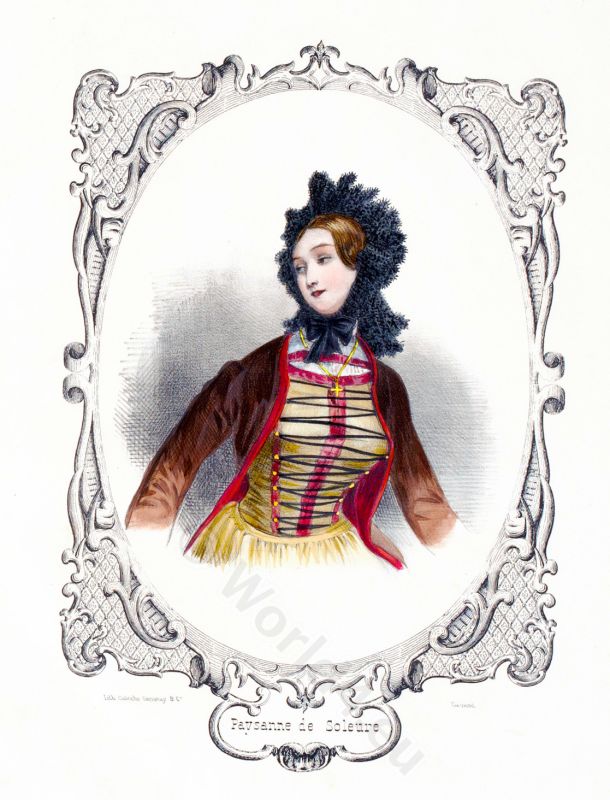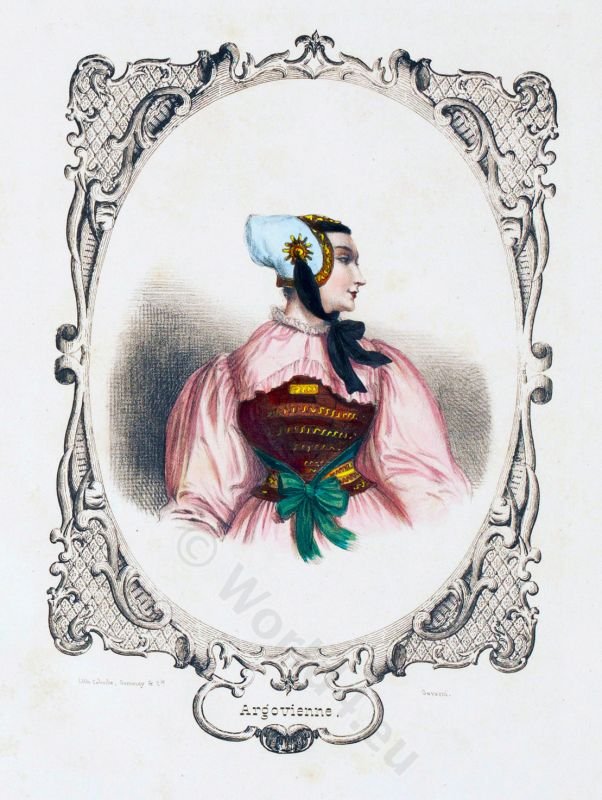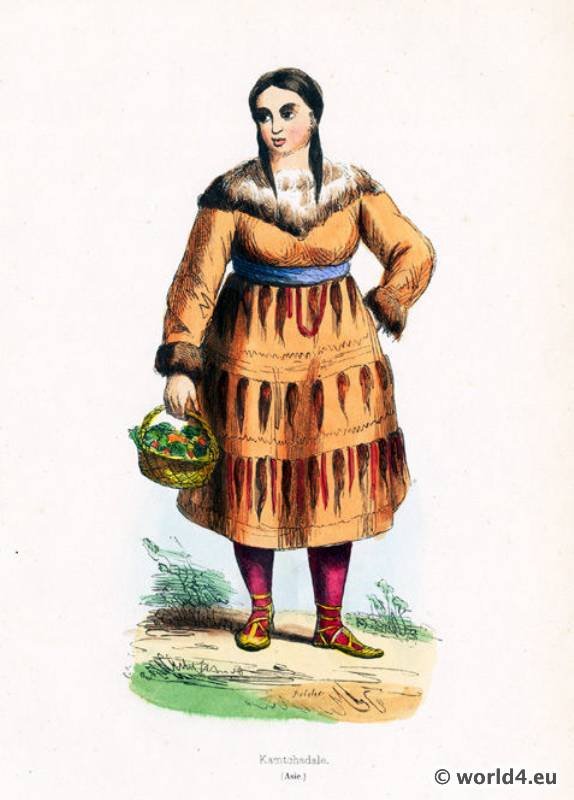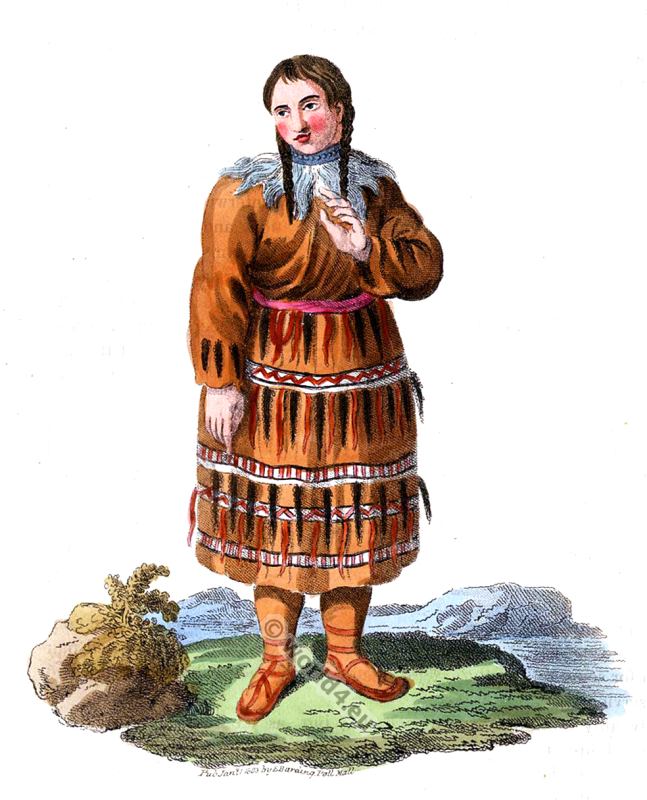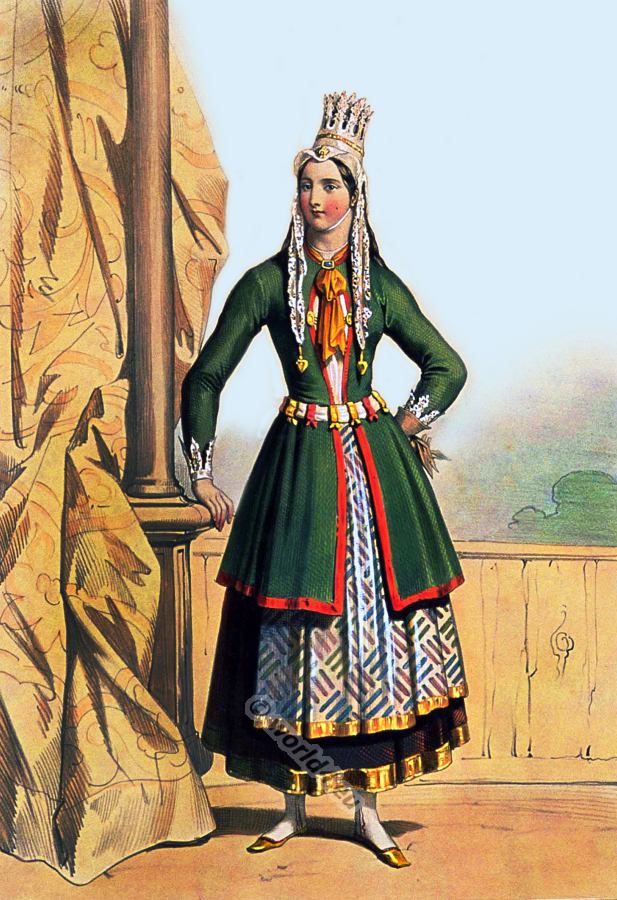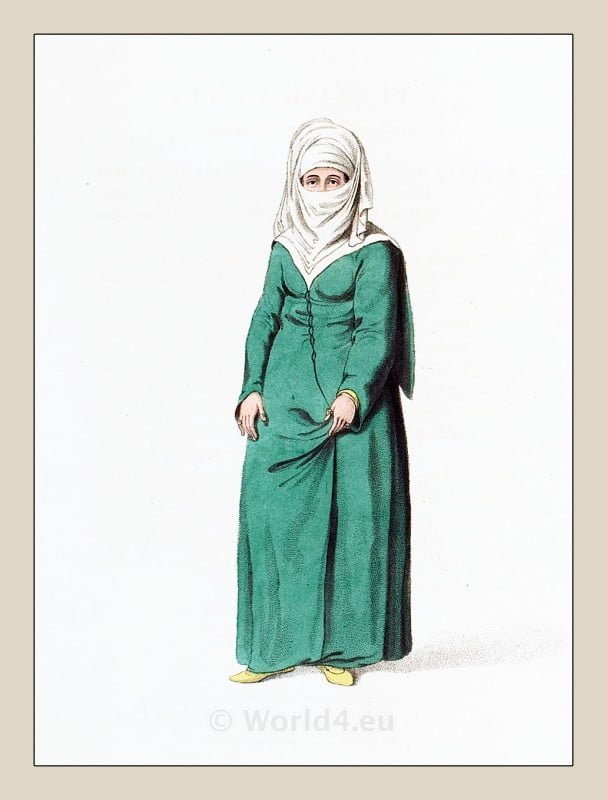A Turkish woman in a provincial dress.
Historical Ottoman Empire officials and ethnic groups.
Turkish provincial dress. A woman with maharmah, feredje and yellow boots.
Women commonly wore this style of outfit in Constantinople and the outer regions of the city.
No dress can possibly be better calculated to conceal the person than that worn by the Turkish females, both in Constantinople and the country, whenever they appear abroad.
No woman is ever seen without her maharmah *), which is generally formed of muslin; one part of which fastens under the chin, and encloses the head, the other crosses the mouth and nose, and admits only space enough to see from.
They also constantly wear a feredje (coat), which entirely envelopes the whole person.
*) A Maharmah is a muslin wrapper for the head and the lower part of the face, worn by Turkish and Armenian women when they go abroad. The marahmah is formed by two pieces of muslin one of which is tied under the chin enveloping the head and the other across the mouth and half the nose admitting space enough for sight. Yellow boots are drawn over the feet and thus equipped a woman may meet the public eye without scandal.
Related
Discover more from World4 Costume Culture History
Subscribe to get the latest posts sent to your email.


